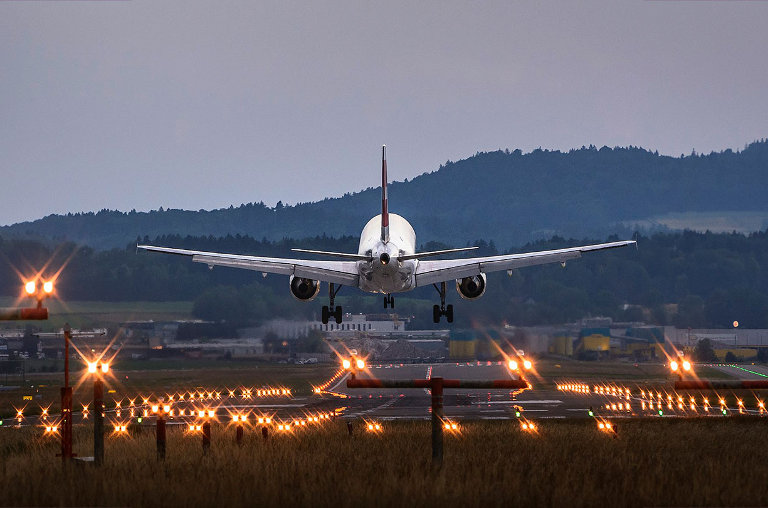Travel as if every place matters.
In my lifetime a curious habit has taken hold among a small minority of the earth’s residents. For this elite group the ability to get to nearly anywhere else on earth within 24 hours, give or take a few, has come to be regarded as normal, as an entitlement, as damn near a necessity.
In this new relationship with geography, there are only two places that matter: the place in which I get on an airplane, and the place where I get off. Intervening places don’t matter: they are not felt, they are not smelled, they are not heard, they are usually not even seen unless the sky is exceptionally clear and a remote landscape scrolls far beneath my window.
To be sure, this ability to ignore intervening distances has developed over a few centuries, but it is still a recent phenomenon. Through nearly all of human evolution, when we traveled we felt every hill and bump and wave along our journey. Even when some of us gained the status of travelling on horseback or perhaps even in a wheeled wagon, journeys were rough and not drastically faster than a human could go on foot. In going from A to B, then, we learned a lot about, and we felt some connection to, every place between A and B.
The construction of smoother roads made some difference, and the explosive development of railroads in the 19th century made a lot of difference. As speeds climbed far beyond any velocity in previous human experience, the journey also became smoother. It was still possible to have a relatively close look at the passing landscape, but it was on the other side of a window, and viewing it was optional. In the twentieth century societies where car culture took over, this strong separation of traveller from landscape became a fact of daily life.
It was air travel, though, that made a complete separation of person from landscape a possibility. At first it was a rare, novel, exciting sensation experienced by just a few. Even today most of the people in the world have never flown,1 and only a tiny minority fly regularly.2 But for the global elite – which includes a substantial part of the population of affluent countries – most travel kilometers are traversed in high-altitude, high-velocity cocoons that make all the earth, save two points, mere fly-over country.
In the next installment of this series we’ll consider the environmental impact of this strange new travel habit. In this installment I concentrate on the struggles some of us face when we ask, “Should I fly?”
We’ll start by asking: which of our journeys actually matter?
Why not? It doesn’t cost me much …
In today’s world a small elite takes multiple trips a year, turning vast energy resources into pollution, in journeys that don’t have a lot of value, even to themselves.
Is that an outrageous and unwarranted value judgement? Perhaps. But here’s how I arrive at that judgement.
Of all the long journeys made by air travellers today, how many would be made if the person had to walk, or get on a slow and risky sailing craft to cross a large body of water? How many would be made if people had to peddle a bicycle most or all of the way? How many would be made if the best option was a train topping out at 100 km and stopping frequently? How many would be made if the traveller had to drive, on a road network that took them through every city, town and village?
We can answer those questions simply by looking into our own histories. Most people made few long journeys when it took days, weeks or months for a one-way trip to their destination.
Certainly, some journeys are exceptionally important to the traveller. Someone might find it so meaningful to say goodbye to an aging parent in a distant country that they would give up months of their time to make the trip. For a few people, it is valuable to go to distant countries for purposes of trade, in spite of the cost in time and risk. For people in desperate socio-economic straits, a trip halfway around the world at great personal hardship and risk and with no guarantee of ever making a return trip, might be judged the best of their terrible options.
A small number of people would even make a few distant journeys just to “see the world” – though in the past such trips were necessarily long in time as well as in space.
But crossing an ocean just to take a short river cruise? Crossing an ocean just to visit a few museums and restaurants for a week or two? Crossing a continent just for a weekend sporting event, or to lie on a beach for several days? Most such journeys simply wouldn’t be made if they involved a week or a month of travel getting there and the same getting home. They simply aren’t that important.
Those of us in the upper half of the global privilege pyramid can make frequent long journeys because they don’t cost us much personally. Since the onset of mass air travel, our long journeys cost us almost none of our own time. There is a cost, perhaps even a significant cost, in our discretionary income, yes – but if we have discretionary income to begin with, we’re lucky enough to have money we can spend on things we don’t need.
Now, we might be aware that our long airline journeys do have costs to other people around the globe, already today and even more in the near future. We might be aware of the carbon emissions from an aircraft, and aware that the other emissions approximately double the global-warming impact of the CO2 emitted.3 We might be aware that although aviation has contributed only a small proportion of global warming pollution to date, that’s because only a small percentage of the world’s population do much or any flying. We might even be aware that if we make more than one long-haul flight per year, those flights are likely the largest contributor to our personal carbon footprint.
That awareness might make us question whether we should stop flying, completely and forever. And perhaps that thought makes us so uncomfortable that we push it away, at least long enough to get our next trip booked.
But “all or nothing” framings seldom lead to the best decision-making. Here’s my suggestion for deciding which trips are really important. Would I still choose to take a journey even if the travel time, forth and back, were weeks or months? Is it important enough that I would even seriously entertain the idea of giving up a large chunk of my own time? If the answer is “no, obviously not!” then I shouldn’t consider foisting the cost on others either – costs, that is, in the form of large amounts of carbon pollution.
Honestly grappling with those questions may not result in a complete cessation of long-distance travel, but it would result in a drastic reduction in casual continent-hopping.
What about “love miles”?
In a perceptive blog post entitled “How to Fly Less”, climate scientist Kimberly Nichols relates how the difficult barrier of “love miles” stalled her from making progress on much easier and more consequential ways of reducing the impact of her flying habit.
“Love miles” is a phrase used by George Monbiot in his 2006 book Heat. “Love miles” refers to those long distance trips, obviously of deep importance to most people, made to visit family members or dear friends across continents or across oceans.
For Kimberly Nichols, a US resident who moved to Sweden for a university position, the thought of giving up her once-a-year visits to her parents in California was too much to bear. Worse, that blocked her from thinking about all the flights she could do without. But when she was prompted to start with the easy issues, not the hard issues, she soon found she could eliminate most of her flying, while deeply appreciating overland trips much closer to her current home.
Her advice is so simple that it shouldn’t even need emphasis:
“Identify which flights you don’t need; cut those first. A recent study of frequent flyers found the travellers themselves rated only 58 percent of their trips “‘important” or “very important.’”4
In the category of “good advice which I myself didn’t follow”, she admonishes “Don’t move really far away from people you love!” Perhaps that sounds trite. But until the last few generations, people needed a very compelling reason to move a great distance away from family, and if they did, they had no expectation of having routine or annual visits with the family members they had left – travel time commitments were too large.
As for long-distance vacations – is the grass always greener on the other side of the world? What about all the great destinations much closer to home that you have only glimpsed from the window of a plane, if at all?
It is often said that travel opens people’s minds, that it broadens their perspectives. Ideally, yes. But I’m not convinced that the age of mass airline tourism has made people generally wiser, let alone happier or more content. What it has done, is given a small subset of the globe’s affluent classes a barely skin-deep acquaintance with dozens or scores of places and their inhabitants. And that, at great but unequally distributed cost to our shared environment.
Stratospheric heights, and a steep price
For now and for the near future, most of the life-altering and life-threatening costs of the climate crisis are being paid by those who have contributed the least to carbon emissions. The people who pay the biggest price don’t live in the tiny proportion of the globe represented by ski resorts, beach resorts, or the capitals of “civilization” such as London, Paris, Los Angeles, New York or Shanghai. Those who pay the highest price live in the rest of the globe, fly-over country for the frequent flyers.
The Global Inequality Report gives a particularly stark example of carbon emissions inequality: space tourism.
“An 11-minute flight [into space] emits no fewer than 75 tonnes of carbon per passenger once indirect emissions are taken into account (and more likely, in the 250-1,000 tonnes range). At the other end of the distribution, about one billion individuals emit less than one tonne per person per year. Over their lifetime, this group of one billion individuals does not emit more than 75 tonnes of carbon per person. It therefore takes a few minutes in space travel to emit at least as much carbon as an individual from the bottom billion will emit in her entire lifetime.”5
But how stark is the carbon emissions inequality for the more “average” frequent flier? We’ll take a more detailed look at inequality in the skies in the next installment of this series.
In the interest of honest disclosure, here is a brief summary of my own relationship to flying. I have never been a frequent flyer, and I’ve only taken two trips across an ocean. For most of my adult life I took most of my vacations by bike, but that often involved a plane trip for at least one leg of the journey. After becoming aware of the climate crisis and the role of aviation in that crisis, I consciously decided to minimize flying. In the past 10 years I have taken one one-way flight from Minneapolis to Toronto, and one one-way flight from London to Toronto. I have also become painfully aware of the terribly limited opportunities for train travel in North America as compared to train travel in Europe. Nevertheless, there are more great places in North America that can be reached by train than I will ever have time to visit.
Footnotes
1 “Less than 20 percent of the world’s population has ever taken a single flight” – former Boeing CEO David Muilenburg, cited in “The global scale, distribution and growth of aviation”, by Stefan Gössling and Andreas Humpe, Global Environmental Change, November 2020.
2 “National surveys indicate that in high income countries, between 53% and 65% of the population will not fly in a given year.” – Gössling and Humpe, Global Environmental Change, November 2020.
3 To cite one source, a Yale Environment 360 article says this: “Though lasting for only a short time, these ‘contrails’ [condensation trails] have a daily impact on atmospheric temperatures that is greater than that from the accumulated carbon emissions from all aircraft since the Wright Brothers first took to the skies more than a century ago.” And further: “Civilian aircraft currently emit about 2 percent of anthropogenic CO2 and, once the effects of contrails are included, cause 5 percent of warming. But there is a key difference. While CO2 accumulates in the atmosphere and has a long-lasting effect, contrails last a matter of hours at most, and their warming impact is temporary.” (How Airplane Contrails Are Helping Make the Planet Warmer, by Fred Pierce, July 18, 2019.) If we rapidly shrink the aviation industry, the effects of contrails will quickly dwindle too. But if the airline industry continues to grow, contrails will help push the climate towards already close tipping points.
4 Data cited from “Can we fly less? Evaluating the ‘necessity’ of air travel”, Journal of Air Transport Management, October 2019.
5 World Inequality Report 2022, Coordinated by Lucas Chancel (Lead author), Thomas Piketty, Emmanuel Saez, Gabriel Zucman, page 134; emphasis mine.
Image at top of page: Airplane landing at Zurich airport, June 2018, photo by Michael Kuhn, accessed at Wikimedia Commons; cropped and resized.






